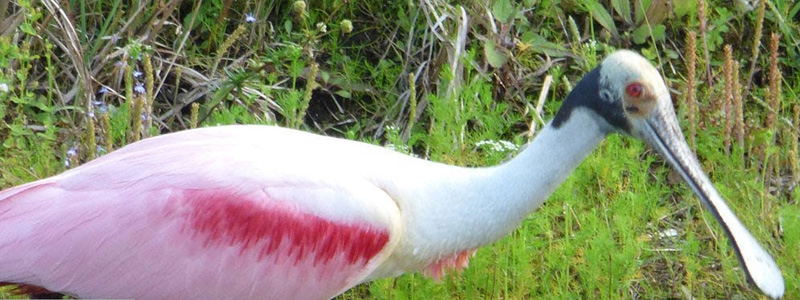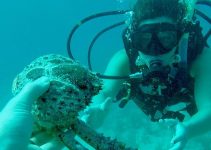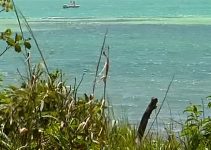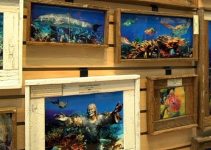Some of the World’s most fascinating birds flock to the Florida Keys
Contents
When considering a vacation in the Florida Keys, most people think of diving and/or other water-related sports. But bird watching is extremely lucrative in the Florida Keys, and many bird lovers travel there to observe birds that cannot be found anywhere else. The Florida Keys are located at the very end of the Florida peninsula. After passing through Florida City on US1, vacationers are officially in the Florida Keys. The Keys are distance measured by MMs or mile markers. In the Florida Keys MMs denote location. For example, when you are on MM-88, you know you’re in Islamorada, and so forth.
Birdwatching in Key West
Key West is home to many rare species and is important as a pit-stop for many migratory birds. Here are a few birds to look for, as well as five birdwatching hot spots.
When John James Audubon visited the Florida Keys in the early 1800s, he was amazed by the abundance and diversity of birdlife. Development and human encroachment have taken a toll on the avian population, but hundreds of songbirds, waterbirds, shorebirds, and raptors still pass through Key West every year.
Many birders in Key West are looking to check these rare birds off their list:
- Antillean Nighthawk: Often heard rather than seen, this nightjar comes out at dusk and is distinguishable from the Common Nighthawk only through its song. The Antillean is a resident of the West Indies and nests in South Florida during summer. The salt ponds surrounding the Key West airport are a good place to spot them.
- Great White Heron or Wurdemann’s Heron: This bird is actually the white morph of the Great Blue Heron, but was formerly considered a separate species. This white version is found only in the Caribbean and is frequently seen in Key West. A more rare dark-bodied heron with a white head and neck dubbed a Wurdemann’s Heron can be spotted in Key West as well.
- Least Tern: The smallest tern in North America is in residence from March through September. These lovely little seabirds used to nest on local beaches, but won’t anymore because of human activity. Now, they roost in noisy colonies on top of the Federal Building, La Brisa Condominiums, the Professional Plaza, and other flat-topped buildings in town. They are difficult to miss, flying back and forth in noisy throngs from the rooftops to the ocean to fish for their babies.
- Mangrove Cuckoo: These elusive birds hide in the mangroves of the lower Keys and the West Indies year-round. As habitat is destroyed in Key West, these cuckoos are spotted less and less.
- Roseate Tern: The roseate tern is a Threatened species that winters along the coast of eastern Brazil, but frequently nests in the Florida Keys on rooftops or on beaches in the Dry Tortugas.
- White-Crowned Pigeon: This shy but beautiful Columbidae occurs in Southern Florida at the northern limit of its range and throughout the West Indies. It is listed as a Threatened species.
Top 5 Birdwatching Spots in Key West
- Sonny McCoy Indigenous Park (1801 White St.): This designated wildlife refuge features plants native to Keys’ soil. The freshwater pond comes courtesy of the Audubon Society, who hosts monthly birding walks in the park. Commonly seen are red-shouldered hawks, American kestrels, anhingas, white-crowned pigeons, purple gallinules, scarlet tanagers, and belted kingfishers. The Key West Wildlife Center is on-site to rescue, rehabilitate, and release injured local wildlife.
- Fort Zachary Taylor (Southard St. / Truman Annex): From magnificent frigates, black skimmers, and brown pelicans off the beach to red-bellied woodpeckers and broad-winged hawks on the nature trails, “Fort Zack” is a birder’s paradise. In March of 2007, the Loggerhead Kingbird, never before spotted in North America, showed up in the canopy.
- Little Hamaca Park (end of Government Rd.): This 10-acre park boasts a mangrove swamp, a salt marsh, a buttonwood wetland, and a hardwood hammock, ending at a canal. Within these various ecosystems, you may spot anything from nesting peregrine falcons to flocks of white-crowned pigeons.
- Key West Tropical Forest and Botanical Gardens (5210 College Rd, Stock Island): This 7.5-acre park is home to many threatened and endangered species of plants. The garden has two freshwater ponds and is currently building a gigantic fresh-water pond that will be visible from the sky, attracting birds as they pass through for migration.
- Dry Tortugas National Park (70 miles west of Key West): No serious birder should visit Key West without taking the ferry to the Dry Tortugas for a day. Out here are nesting sites for pelagic birds like the northern gannet, magnificent frigatebird, brown booby, black noddy, and sooty tern just to name a few.
Bird Watching in the Upper Florida Keys
When heading south in the Florida Keys, Key Largo is the first Key you come to. The 2009 Christmas Bird Count logged over a hundred individual bird species in one day in Key Largo. Key Largo is home to the Dagney Johnson Hammocks Botanical State Park, located at MM 102.5, and is noted for their annual birding tours and lecture series held in Jan., Feb., and March. Key Largo serves as an anchor for the Great Florida Birding Trail, which extends through 116 Florida counties, as many birds use the Florida Keys for their migration north. At the DJHB State Park birders are likely to see breeding populations of mangrove cuckoos, white-crowned pigeons, black-whiskered vireos, and migrating warblers. Bird enthusiasts have also seen Zenaida dove, thick-billed vireo, and the rare Lasagra’s Flycatcher.
Popular Ornithology Site
Just across the street from DJHB Park is John Pennekamp State Park. JPSP is famous for its coral reef exploration, but it is also an excellent park for nature walks and birding. Birders can check with the information center and will be supplied with a list of potential bird sightings. Some of the birds spotted regularly in JPSP are Bahamas mockingbird, gray kingbirds, Gannets, petrels, sooty terns, thick-billed vireo, and many more. Also for an added excursion, the park has daily glass-bottomed boat trips. The Florida Keys Wild Bird Center is located on Key Largo also, (mm 93.6) and this is where they take in sick or injured birds. The hope of the bird specialists there is always to return any rescued bird back into the wild, but many will have to live the remainder of their lives in the on-site sanctuary. Birders may visit the entire facility and speak with any of the many Ornithology experts. As an added treat the center has recently built a World Parrot Mission that is open for visitors and includes daily parrot behavioral demonstrations.
More Birding in the Upper Keys
Windley Key, located near MM90, offers Windley Key Fossil Reef Park where you have a choice of 5 hiking trails with numbered stations for bird watching. At the park’s store, you can acquire a 70 page illustrated list of birds and other forms of nature potentially spotted along the way.
Islamorada Adventure Tours
Traveling along down US1 is the island of Islamorada and Islamorada Adventure Tours (MM 81.5). Here, they offer something for the whole family including wildlife identification. Boat trips and bird tours are offered where many unusual bird sightings are likely. Bird sightings documented by Islamorada Adventure Tours include, but are not limited to, roseate spoonbills, reddish egrets, and birds of prey such as bald eagles and osprey.
Long Key State Park
Long Key State Park can be found on MM 67.5 where they have birding trails and canoe rentals. On Long, Key birders are likely to spot migrating spoonbills, warblers, egrets, and great blue herons. Long Key State Park offers the ideal habitat for a wide variety of birds that cannot be found further north. Habitats like mudflats, hammocks, and mangrove swamps, just to name a few. Also, many long-legged birds can be sighted there searching the shallows for food.
The variety of birds and possible sightings attributed to the Florida Keys are far too many to mention, but that is not the only reason birding is so popular in the Keys. Bird watching is possible in the Florida Keys all year long, and beginning in April the Keys are famous for migrating bird sightings. With the warming temperatures, many birds will leave the tropics and use the Keys as their travel route to the north. Another great prospect for birdwatching in the Florida Keys is that the weather permits birding during the months when it is not possible because of snow or poor weather conditions to the north.







